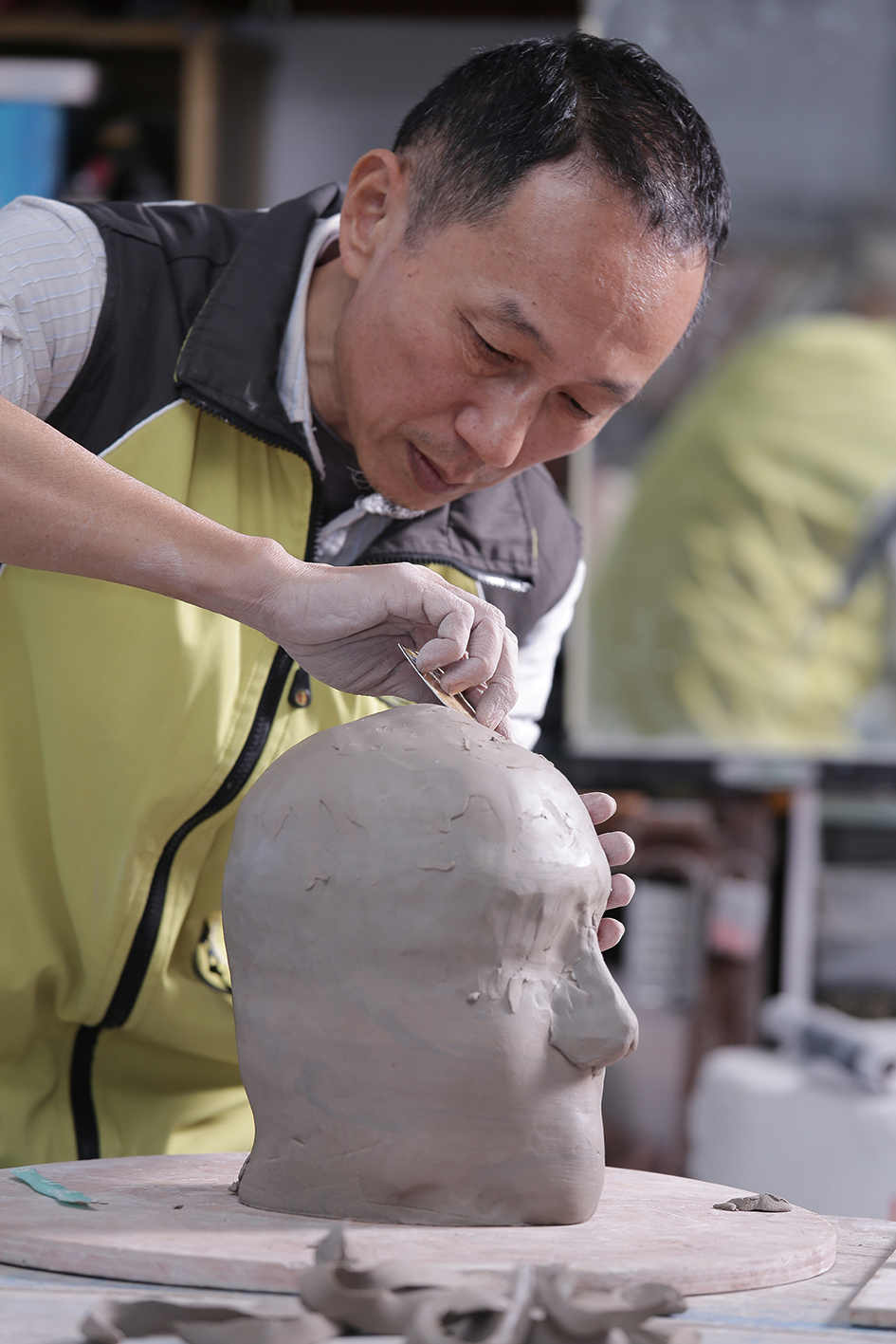
Yu Cheng-Chung is a ceramist from China. He has held more than 10 solo exhibitions and participated in many international ceramic exhibitions, competitions or seminars held in Spain, Portugal, Italy, Switzerland, China and other countries. His works have been praised.

Yu Cheng-Chung's ceramic work The Wind Blows is a silent dialogue between time and human existence. The facial contours of the sculpture's head made of white porcelain are deliberately simplified into geometric lines as if an ancient Greek statue is reborn in a modern context. The ribbon horizontally attached to the forehead transitions through a spectrum of colors, from white to blue, green, and orange. When viewers stop and stare at this work, those solidified folds seem to flutter visually.
The most astonishing aspect of this work lies in its capture of dynamics. Ceramic art is originally a kind of solidified art, yet Yu Cheng-Chung has reconstructed the trajectory of the wind in a three-dimensional space through the curving lines of the ribbon. Those folds blown up by the wind are not a locked frame of a moment. They have transformed the eternal state of the continuously blowing wind into a material form. This creative technique coincides with the philosophy of "depicting movement with stillness" in Eastern aesthetics. Just as Guo Xi, a famous painter in the Northern Song Dynasty, said in Linquan Gaozhi,"If you want to depict a mountain as high, showing all of it won't make it look high. The mountain is actually high only if you depict the mist and clouds encircling its waist." The ceramist has accomplished an eternal portrayal of the wind with the static porcelain as a medium.
The gradient glaze color system constitutes a narrative in another dimension. The gradient colors imply the passage of time, shifting from dawn's indigo to twilight's deep purple. When the light shimmers on the glazed surface, those gradient color areas will cast flowing shadows on the white head. This play of light and shadow endows the static sculpture with the rhythm of life. Yu Cheng-Chung seems to remind us that time is not a linear scale but a flowing medium that surrounds us just as the wind is both the movement of the air and the air itself.
In an era when digital existence increasingly erodes human perception, The Wind Blows offers a possibility of resistance against alienation. The white head symbolizes modern people disciplined by technological rationality while the ribbon represents the unsubdued sensuous existence. When we gaze at this work, those folds blown up by the wind will awaken our dormant sensory memories. For example, the gentle breeze caresses our faces in spring and the sound of the forest brushes past our ears like waves in the autumn night. The ceramist makes the vanished nature blow once again in the spiritual world of contemporary people through the medium of matter.
This work ultimately points to the inquiry into the essence of existence. When our gaze wanders between the static porcelain and the flowing glaze colors, we will suddenly realize that the wind is not only the force that blows the ribbon but also the ribbon itself. Just as Heidegger said, "The being of beings reveals itself in beings." Yu Cheng-Chung has constructed a fable of existence with ceramic art--we are both the dust carried along by the wind of time and the particles that constitute the wind. This duality is precisely the most touching essence of human existence.